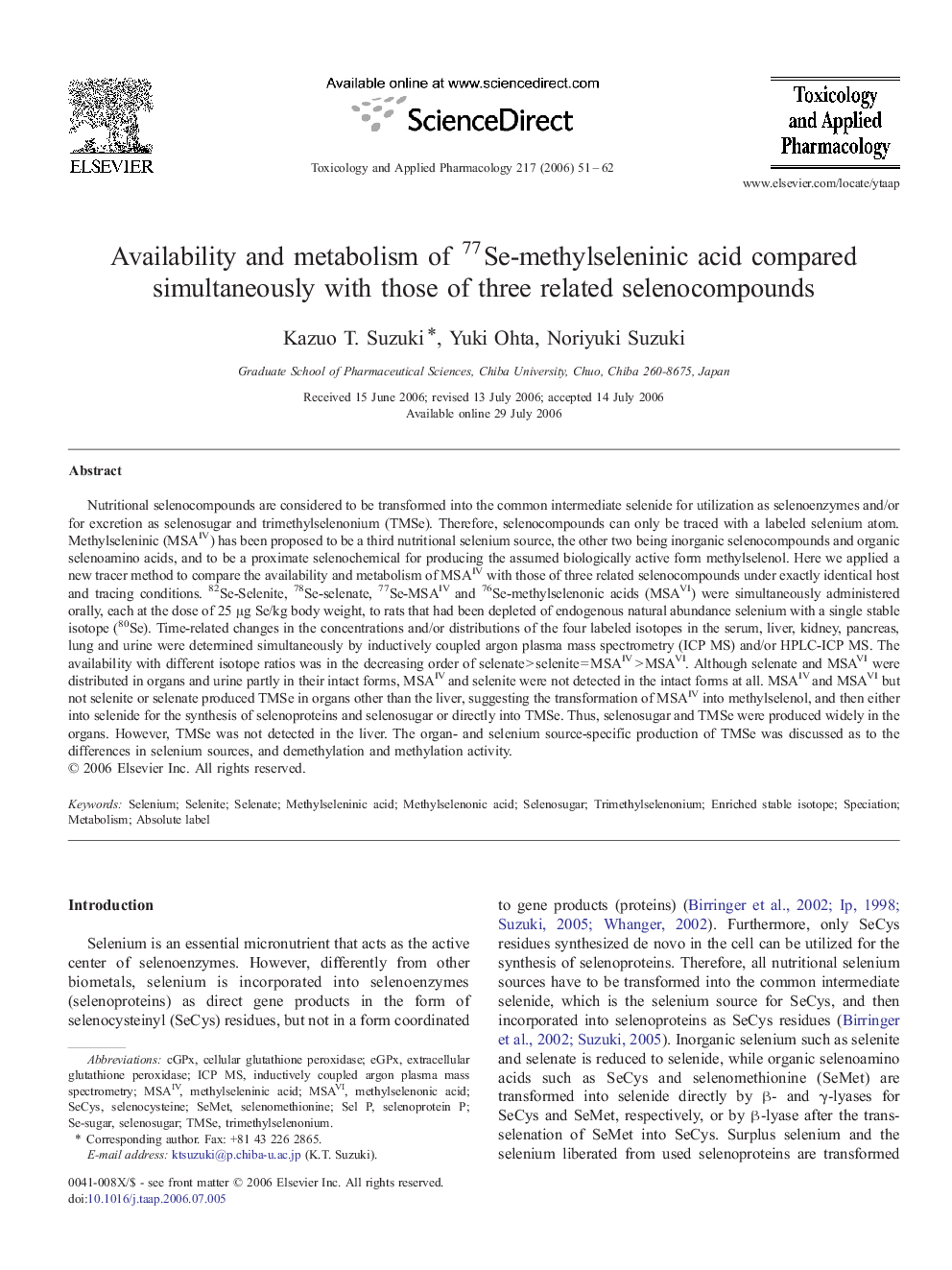| کد مقاله | کد نشریه | سال انتشار | مقاله انگلیسی | نسخه تمام متن |
|---|---|---|---|---|
| 2571949 | 1128660 | 2006 | 12 صفحه PDF | دانلود رایگان |

Nutritional selenocompounds are considered to be transformed into the common intermediate selenide for utilization as selenoenzymes and/or for excretion as selenosugar and trimethylselenonium (TMSe). Therefore, selenocompounds can only be traced with a labeled selenium atom. Methylseleninic (MSAIV) has been proposed to be a third nutritional selenium source, the other two being inorganic selenocompounds and organic selenoamino acids, and to be a proximate selenochemical for producing the assumed biologically active form methylselenol. Here we applied a new tracer method to compare the availability and metabolism of MSAIV with those of three related selenocompounds under exactly identical host and tracing conditions. 82Se-Selenite, 78Se-selenate, 77Se-MSAIV and 76Se-methylselenonic acids (MSAVI) were simultaneously administered orally, each at the dose of 25 μg Se/kg body weight, to rats that had been depleted of endogenous natural abundance selenium with a single stable isotope (80Se). Time-related changes in the concentrations and/or distributions of the four labeled isotopes in the serum, liver, kidney, pancreas, lung and urine were determined simultaneously by inductively coupled argon plasma mass spectrometry (ICP MS) and/or HPLC-ICP MS. The availability with different isotope ratios was in the decreasing order of selenate > selenite = MSAIV > MSAVI. Although selenate and MSAVI were distributed in organs and urine partly in their intact forms, MSAIV and selenite were not detected in the intact forms at all. MSAIV and MSAVI but not selenite or selenate produced TMSe in organs other than the liver, suggesting the transformation of MSAIV into methylselenol, and then either into selenide for the synthesis of selenoproteins and selenosugar or directly into TMSe. Thus, selenosugar and TMSe were produced widely in the organs. However, TMSe was not detected in the liver. The organ- and selenium source-specific production of TMSe was discussed as to the differences in selenium sources, and demethylation and methylation activity.
Journal: Toxicology and Applied Pharmacology - Volume 217, Issue 1, 15 November 2006, Pages 51–62